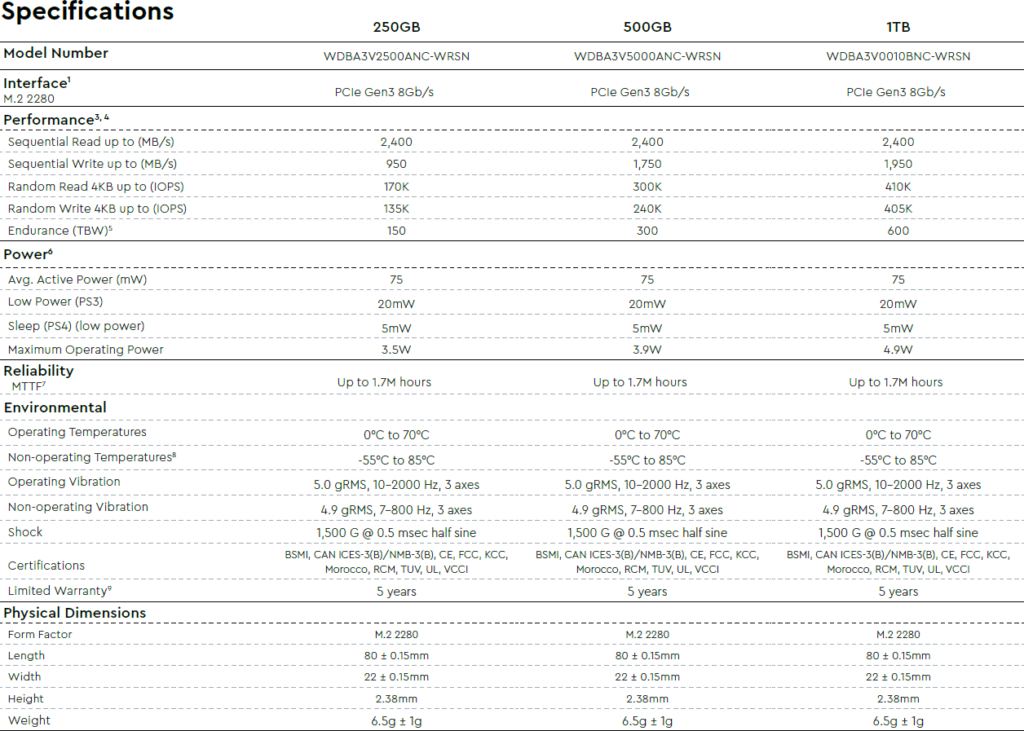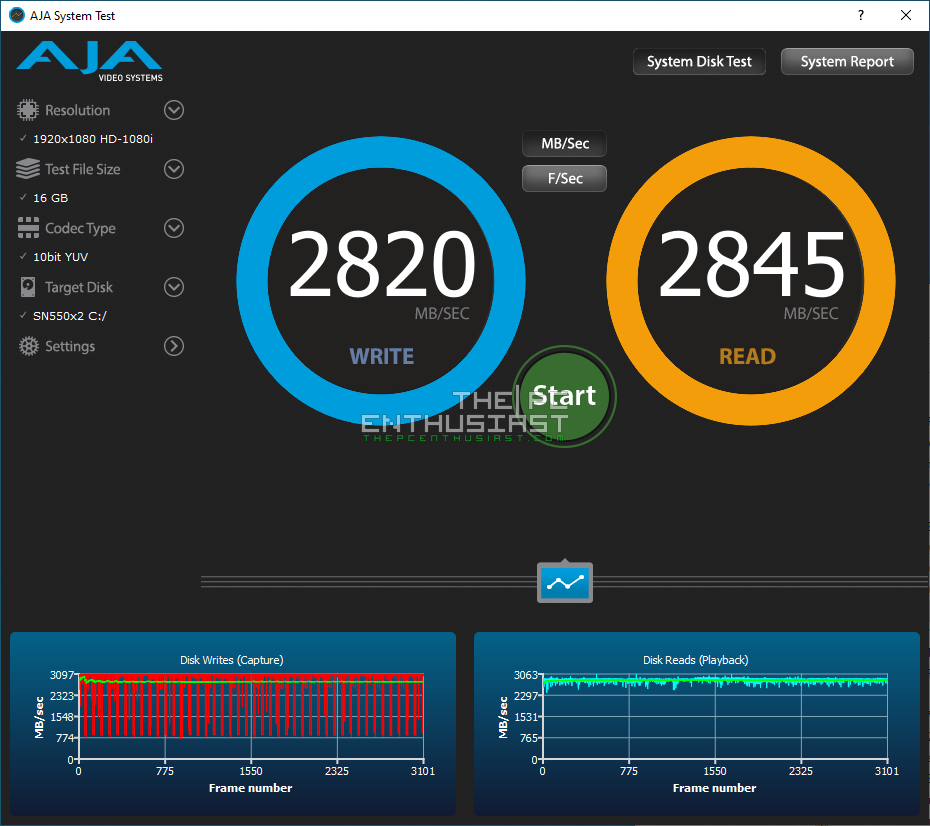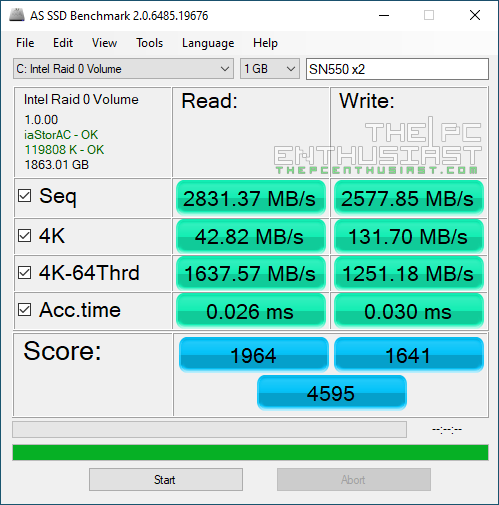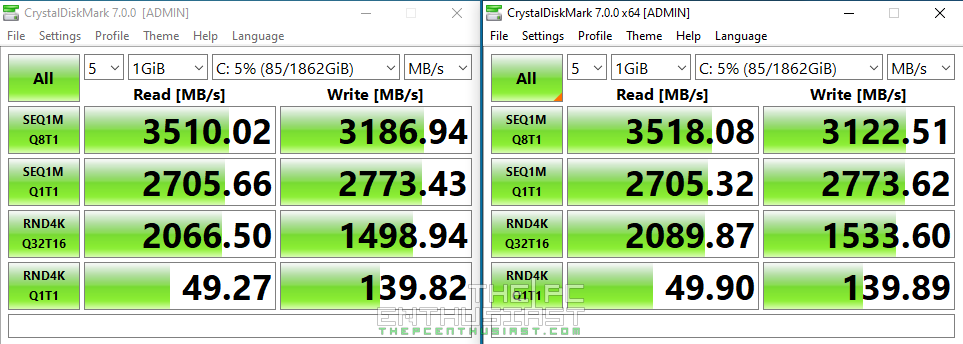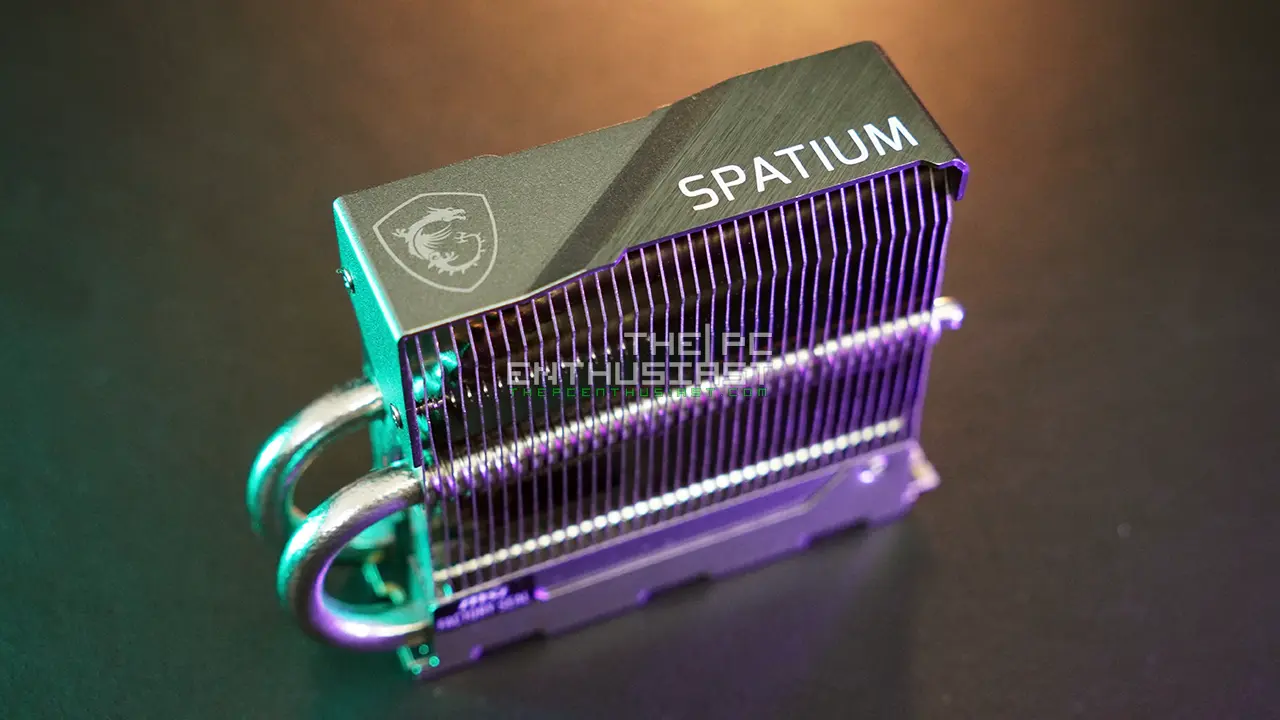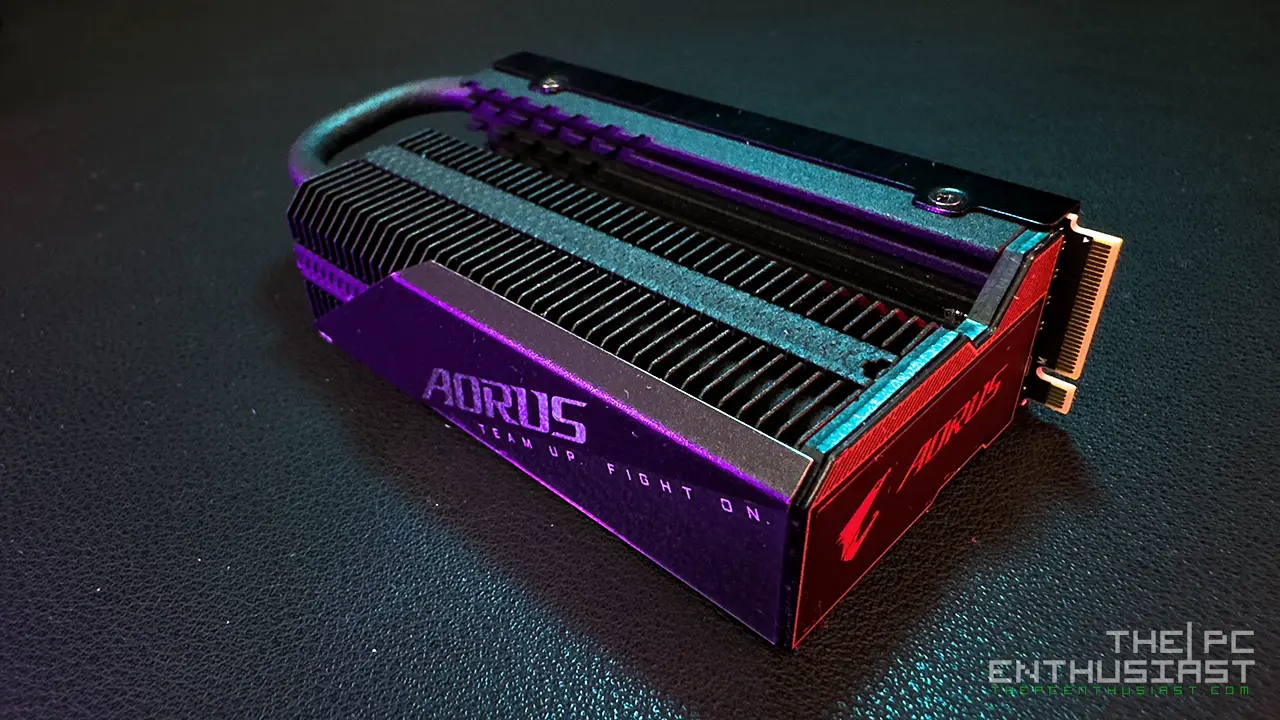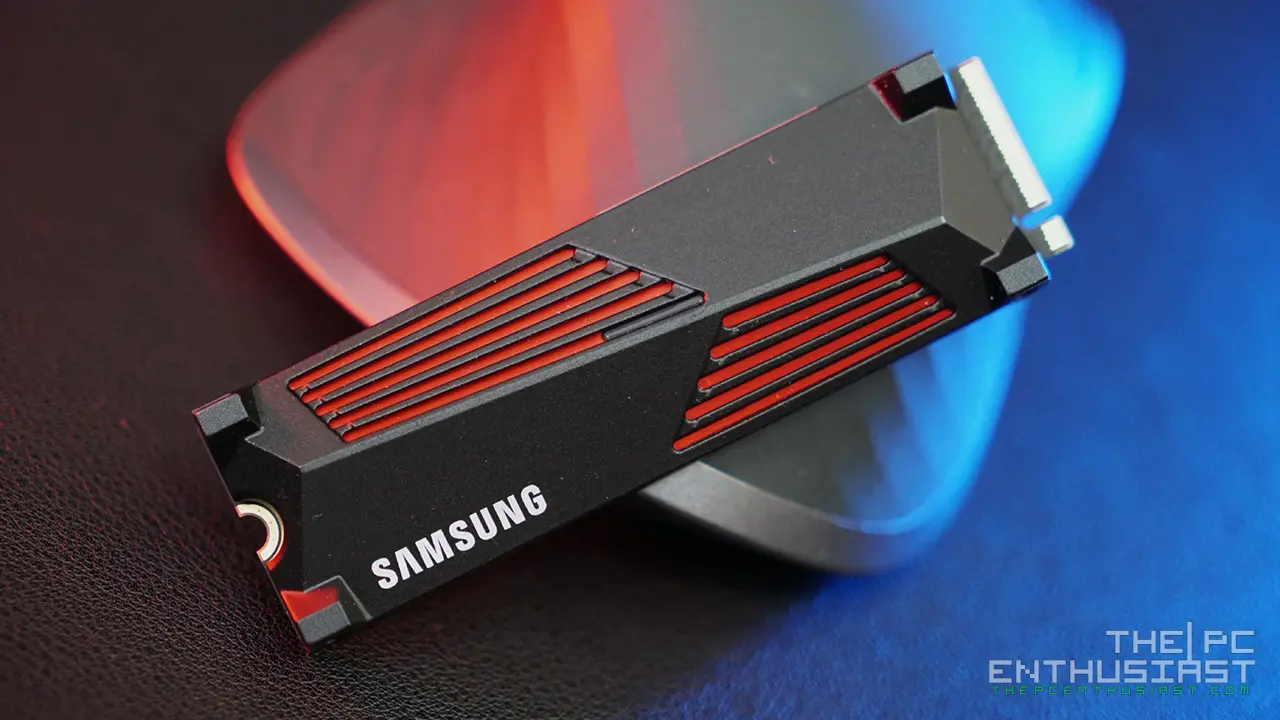The WD Blue SN550 NVMe SSD is the company’s entry-level M.2 NVMe SSD available right now. It has been in the market for quite some time; and it’s undeniably one of the most popular M.2 SSD in the market. Why is this SSD so popular despite being an entry-level SSD? Is the WD Blue SN550 really the best budget NVMe SSD available today? How fast is this SSD anyway? Let’s find out in our WD Blue SN550 M.2 SSD review below.
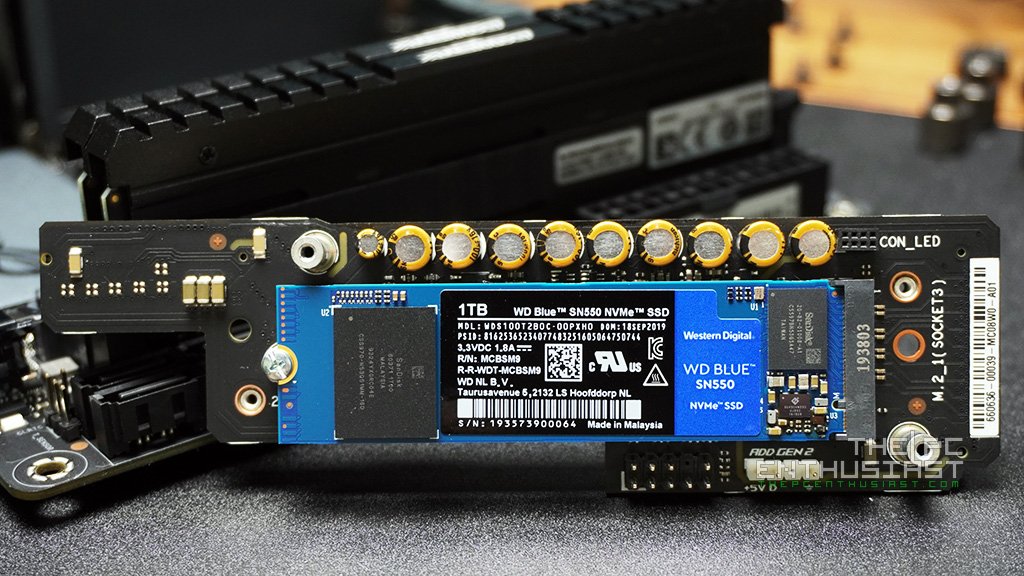
WD Blue SN550 NVMe SSD Review – Not The Fastest, But Great Value
If you are familiar with WD’s lineup, you’re probably aware that the “Blue” is their mid-tier storage solution. Meanwhile, the “Green” lineup is their value-oriented products and the “Black” is WD’s high-performance storage devices. The WD Blue SN550 sits in between the WD Green SATA SSD and WD Black SN750 / SN850 NVMe SSD.
WD’s naming scheme is also easy to understand. SN550, followed by SN750, and the fastest is the SN850. The recently released AN1500 is just like two SN750 put into one PCIe SSD. Get it? 750 x 2 = 1500. But specifically, what’s inside the AN1500 are two SN730 NVMe SSDs.
Anyway, going back to the WD Blue SN550. Like I mentioned earlier, it’s the company’s entry-level M.2 Gen3 NVMe SSD. It offers a sequential read speed of up to 2,400MB/s and a sequential write speed of up to 1,950MB/s. In IOPS, that’s about up to 410,000 IOPS random read and up to 135,000 IOPS random write speeds; for the 1TB model.
Speaking of capacity, it’s available in 250GB, 2500GB, and 1TB capacities. And unfortunately, there’s no 2TB or higher capacity (yet). On top of that, WD is offering a 5-year limited warranty for its SN550 SSD series. That’s a lot of years for an entry-level SSD if you ask me.
WD Blue SN550 NVMe SSD Specifications
Below is the full specification of the WD Blue SN550 NVMe SSD. You can click on the image for a larger view.
WD SN550 NVMe SSD latest pricing and availability:
For US: Available on Amazon.com here
For US/Global: Available on Newegg.com here
For UK: Available on Amazon UK here
Meet the WD SN550
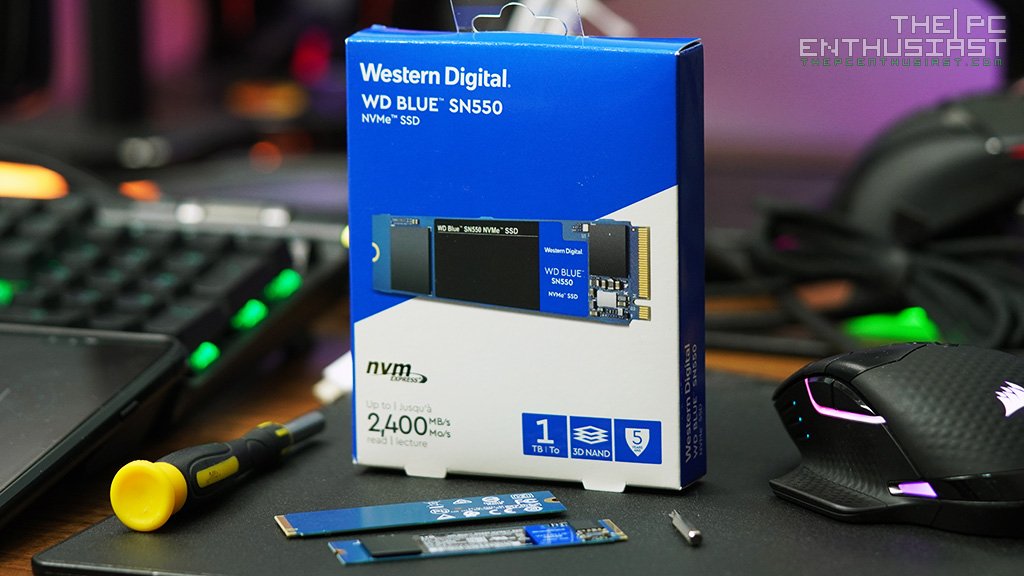
The WD SN550 came in with a simple slim box, with a very obvious blue and white color theme. The highest theoretical speed, which is its sequential read speed, is highlighted at the front portion of the box. The lower capacities have similar sequential read speeds of up to 2,400MB/s. But their write speeds are not the same. The write speeds are slower with lower capacities.

The SN550 is a DRAM-less single-sided M.2 SSD. Meaning it doesn’t have a DRAM cache and that usually translates to slower performance. As you can see from the photo above, only one side of the SSD is populated. And in fact, there’s nothing underneath the sticker label on the front side.
On the SN550, you can only see the SanDisk 3D TLC NAND flash and an in-house controller that is SanDisk branded as well. The rest are just capacitors and that’s it. Now let’s check out how the SN550 performs.
Test Setup
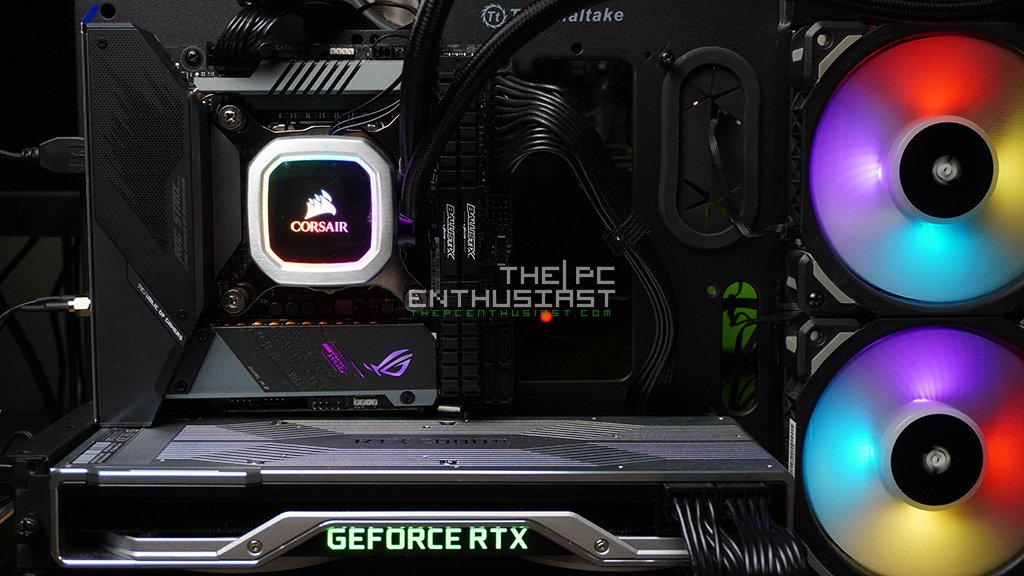
The WD SN550 was tested on the Asus ROG Strix Z490-I Gaming motherboard, powered with an Intel Core i7-10700K CPU. Below are the rest of the specifications of the system:
| Operating System | Windows 10 Pro 64bit version 2004 |
| Processor | Intel Core i7-10700K |
| Motherboard | Asus ROG Strix Z490-I Gaming |
| Memory | Crucial Ballistix Elite 16GB DDR4-4000 CL18 |
| Graphics Card | NVIDIA GeForce RTX 2080 Ti Founders Edition |
| OS Drive | WD Blue SN550 |
| Power Supply | Silverstone ST1000-PT |
| Chassis | Thermaltake Core P3 |
WD Blue SN550 NVMe SSD Benchmark Results
AJA Benchmark Results
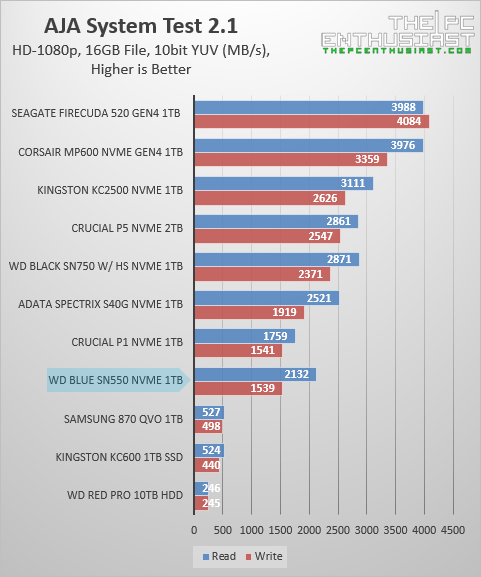
In this test, we can see that the WD SN550 is just on par with the Crucial P1, also an entry-level SSD. Although in the graph we see that it’s just 2MB/s slower when it comes to write speed, that’s basically negligible. It’s a bit faster when it comes to read speed.
Anvil’s Storage Utilities Benchmark Results
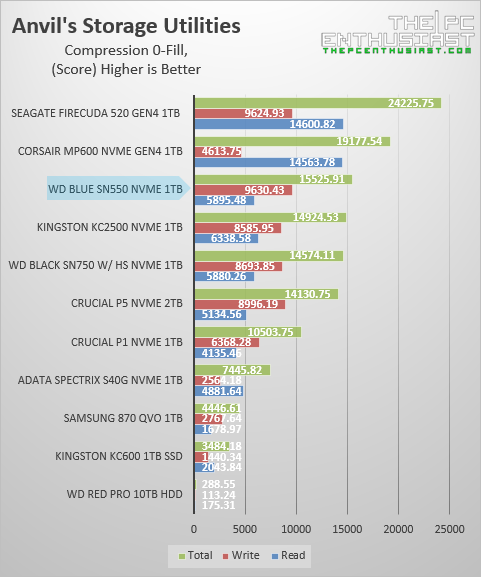
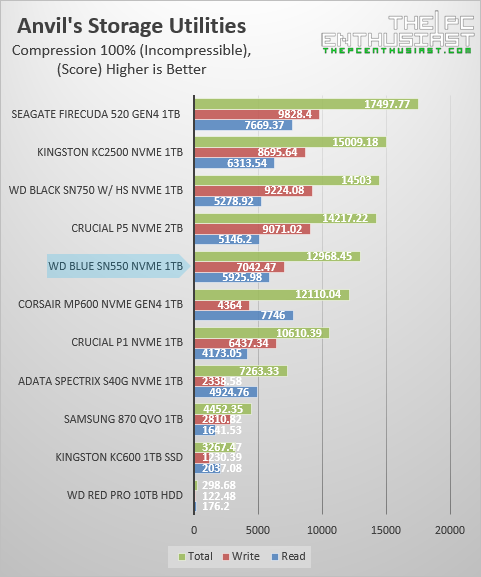
In Anvil’s storage utilities test, the SN550 is performing well for its class. As you can see from the benchmark results above, it’s performing similar to the other higher-end SSDs. Whether this test or benchmark result is flawed or not, we’ll just have to check out the other results.
AS SSD Benchmark Results
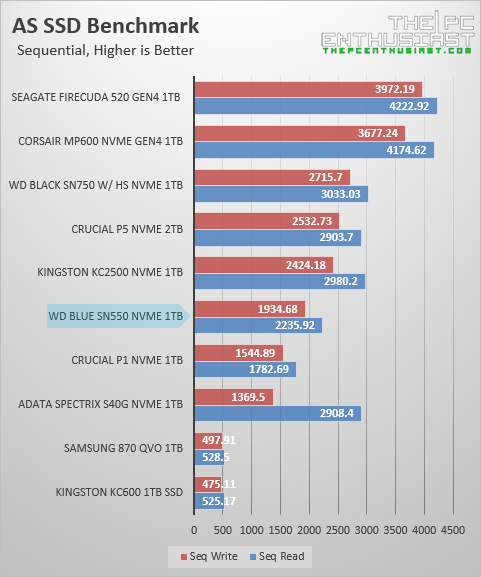
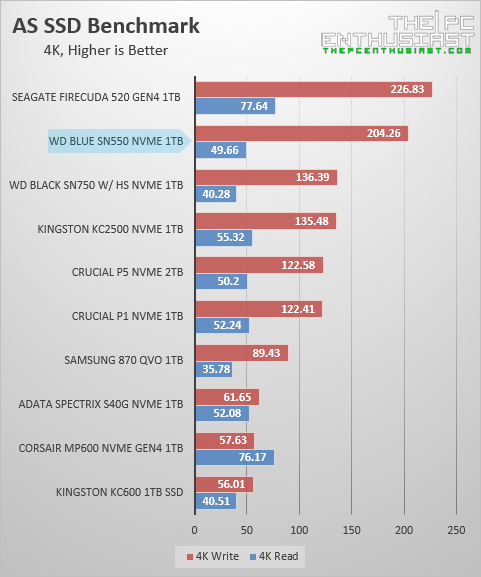
I’m quite surprised to see that the SN550 is performing well when it comes to random write speeds. Although its sequential speeds are just where it is expected to be. In the AS SSD test, you can see that the SN550 is just a bit faster than the Crucial P1 overall.
ATTO Disk Benchmark Results
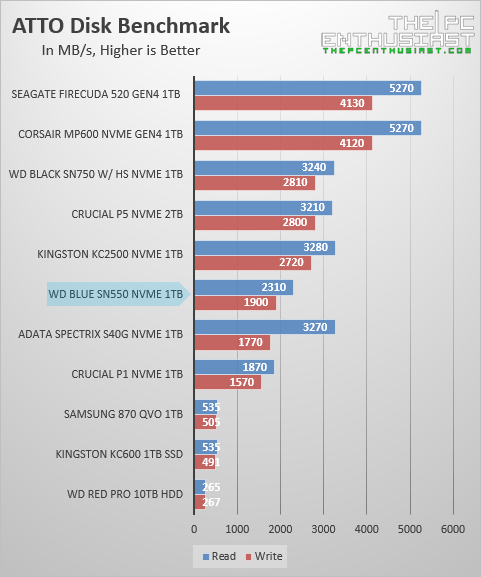
ATTO disk benchmark usually shows the maximum theoretical speed of a storage drive. That’s why the manufacturers are always advertising the speeds of their storage devices using this benchmark tool. It doesn’t reflect the real-world performance, but only the maximum potential speed. Nevertheless, we can see that the SN550 is still faster than the Crucial P1 and sits just below the faster NVMe SSDs.
CrystalDiskMark Benchmark Results
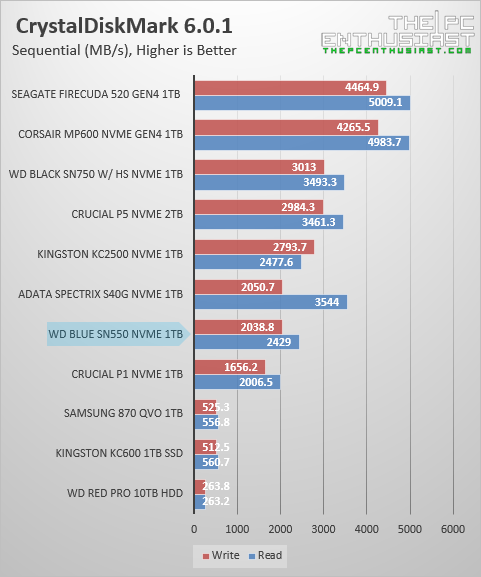
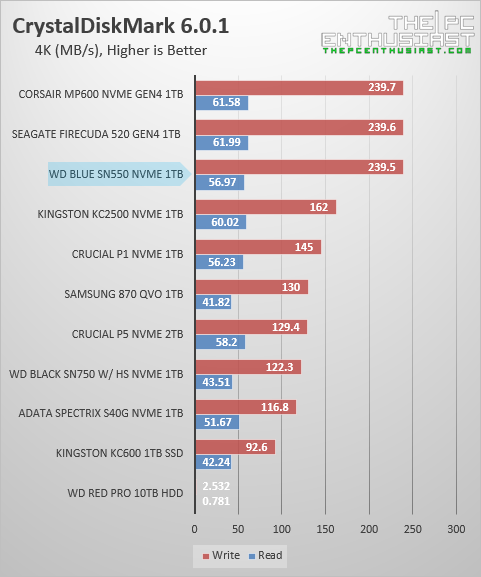
In CrystalDiskMark benchmark, we can see a similar performance pattern with the AS SSD test we got earlier. The SN550 performs quite well in random read/write speeds, but trails behind when it comes to sequential read and write speeds.
ezIOmeter Benchmark Results
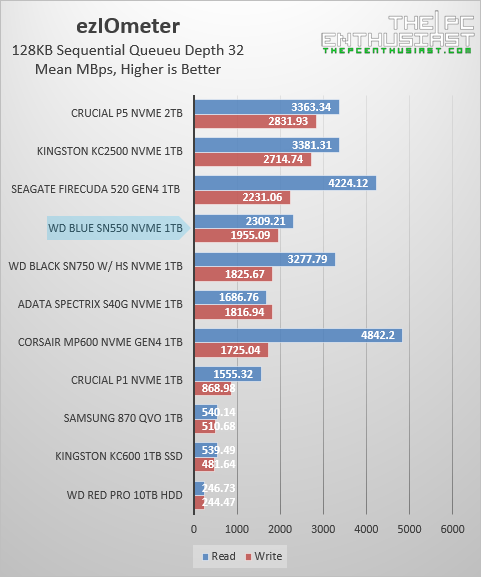
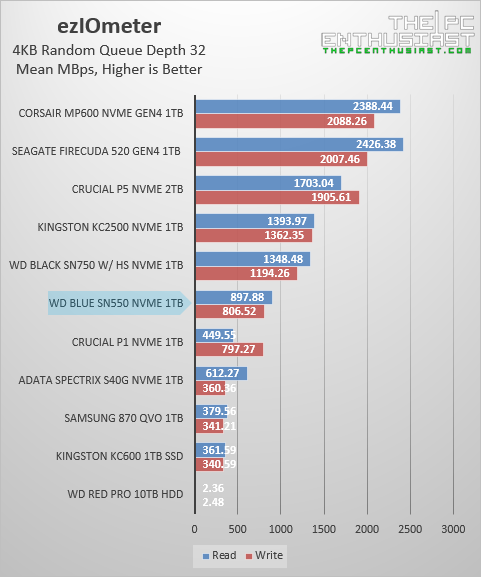
It’s surprising to see that the SN550 performs well in the 128KB sequential read and write speed in this test. Although, in the random test, we see it performing just as expected, right above the Crucial P1.
PCMark 8 Storage Benchmark Results
Now let’s do a more intensive benchmark this time. Unlike the previous benchmark tools, the PCMark 8 Storage test is more intensive and uses a real-world scenario to test the drive. It tests the performance of SSDs, HDDs, and hybrid drives with traces recorded from Adobe Creative Suite, Microsoft Office, and a selection of popular games. It also highlights real-world performance differences between storage devices, unlike synthetic storage tests.

As we can see from the test above, the WD Blue is quite performing well. And notice that there’s only very little difference in the overall storage score compared to the other higher-end SSDs. Honestly, I am not sure why the faster WD Black SN750 with heatsink ended up just below the SN550. Perhaps there was a fluke when the SN750 was benchmarked with PCMark 8.
PCMark 10 Full System Drive Benchmark Results
For the last test, let’s do a more modern or updated benchmark tool similar to the PCMark 8 – the PCMark 10 full system drive test. This test uses a wide-ranging set of real-world traces from popular applications and common tasks to fully test the performance of the fastest modern drives. This will give us a more realistic expectation of a drive’s performance and a closer to a real-world testing scenario.

Again, I was expecting that the WD Blue SN550 would sit just somewhere above the SATA SSDs. Turns out, it’s more than capable despite being a DRAM-less NVMe SSD. It’s performing faster than the ADATA Spectrix S40G overall and just a tad faster than the Seagate FireCuda 510 NVMe SSD. That’s quite impressive for an entry-level SSD.
WD Blue SN550 RAID0 Benchmark Results
Before I wrap things up, I configured two SN550 1TB to run in RAID0 mode. The Asus ROG Strix Z490-I Gaming motherboard can be mounted with two M.2 SSDs on its daughterboard. Below are some of the results I got.
As you can see from the results above, I got around almost double the speed. It is now performing similarly to a fast high-performance Gen3 SSD. But in the end, I don’t think it’s a good idea to run the SN550 in RAID0 mode. There’s no data protection and if you need a fast SSD, better get a faster one, like the SN750; or the newer SN850 Gen 4 SSD that is capable of reaching up to 7,000MB/s in sequential speeds.
Pricing and Availability
The WD SN550 NVMe SSD series is now available in 250GB, 500GB, and 1TB capacities; and comes with an MSRP of $49.99, $59.99, and $104.99 respectively. These prices are already marked down prices from the original $54.99, $69.99, and $129.99 when it was first released. WD is also offering a limited 5-year warranty for the said SSD. For the up to date pricing and availability of the SN550, kindly check out the links below.
WD SN550 NVMe SSD latest pricing and availability:
For US: Available on Amazon.com here
For US/Global: Available on Newegg.com here
For UK: Available on Amazon UK here
WD Blue SN550 M.2 SSD Review Conclusion
At the end of the day, we now know why the WD Blue SN550 is such a popular and in-demand product. It’s not the fastest NVMe SSD around, however it doesn’t disappoint when it comes to performance/dollar. Even though it’s an entry-level SSD, it’s still significantly faster than a hard disk drive and even faster than the fastest SATA SSD.
There’s no doubt WD is offering a great value here. For just around ~$105 USD, you get a 1TB SSD with very acceptable performance for normal desktop operation. This would also be a nice and affordable upgrade if you plan to switch from an HDD or SATA SSD; assuming your laptop or motherboard has an M.2 slot.
Now it’s not a perfect entry-level SSD. There are a few things that you need to keep in mind though. Unlike other SSDs, the SN550 doesn’t have security features like hardware-based encryption. Also, the available capacity is only up to 1TB. It would be nice if there was a 2TB capacity as well. Finally, just a cosmetic one, the blue PCB might be a turn off for some. But hey, this is an entry-level product and it’s not meant to be a head-turner in the first place.
Finally, a good SATA SSD nowadays is priced somewhere in the $100 mark, give or take. And between a SATA SSD and this entry-level NVME SSD, I’d pick the SN550. Not unless you’re system doesn’t have an M.2 slot. Overall, the WD Blue SN550 gets a two thumbs up for me. It offers great value and a reasonable price for performance. It’s definitely one of the best, if not the best budget NVMe SSD around.


